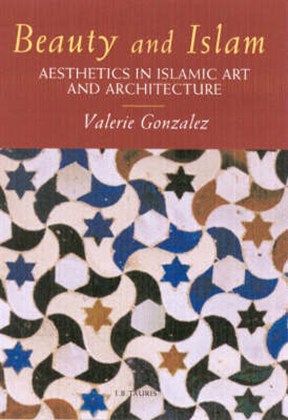Beauty and Islam Aesthetics in Islamic Art and Architecture
I.B. Tauris in association with the Institute of Ismaili Studies
This illustrated volume explores aspects of aesthetics in classical Islamic thought set in the context of contemporary theories. Valérie Gonzalez offers new perspectives on Islamic art and architecture with examples ranging from the Qur’an and the Alhambra to the works of present-day artists and philosophers.
Tracing the roots of Islamic aesthetics back to the works of great philosophers of the Middle Ages such as Ibn Sina (Avicenna) and Ibn Rushd (Averroes), Gonzalez shows that aesthetic theory in Islam belongs within the wider context of medieval thinking on theology, ethics, physics and metaphysics.
In Gonzalez’s analysis, an investigation of the famous optical illusion in the Qur’anic story of King Solomon and the Queen of Sheba reveals an aesthetic metaphor. Her exploration of the geometrical decorative configurations of the Alhambra provides a new interpretation based upon current theories of phenomenology and semiotics.
This original and stimulating work brings fresh insights to its subject by considering traditional Islamic architecture, miniatures and ceramics alongside the works of modern artists such as Frank Stella, Mark Rothko and Edward Ruscha.
List of Illustrations
Foreword by S. Nomanul Hag
Preface
Introduction
1. Beauty and the Aesthetic Experience in Classical Arabic Thought
2. The Aesthetics of the Solomonic Parable in the Qur’an
3. Understanding the Comares Hall in the Light of Phenomenology
5. Abstraction, Kinetics and Metaphor: the ‘Geometries’ of the Alhambra
5 The Signifying Aesthetic System of Inscriptions in Islamic Art
Notes
Bibliography
Index
‘A very interesting book about Islamic art and architecture, because it goes off the beaten track . . . her approach is refreshing’
– Gerrit Steunebrink (University of Nijmegen), Bibliotheca Orientalis
Valerie Gonzalez received her doctorate in the Humanities, specializing in the Arab world, from l’Université d’Aix-en-Provence and holds a diploma in painting from l’Ecole des Beaux-Arts de Marseille-Luminy. Formerly a member of the Institute for Advanced Study, Princeton, she is currently a research associate at l’Ecole d’Architecture de Marseille-Luminy, where she lectures on the history of architecture and Islamic town planning. Dr Gonzalez is the author of Emaux d’al-Andalus et du Maghreb (Aix-en-Provence, 1994) and Piège de Salomon, La pensee de l’art dans le Coran (Paris, 2001) as well as numerous articles on art history and Islamic aesthetics.

